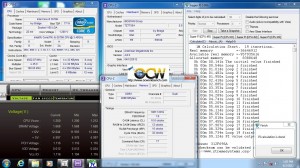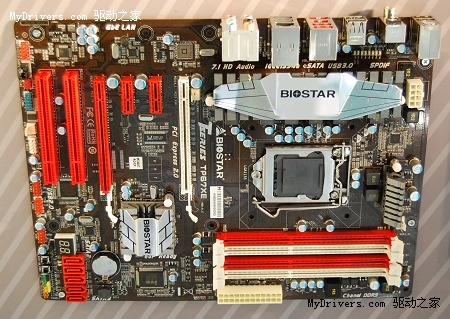BIOSTAR TZ77XE4 Introdution
bluetooth 5 May 2012
Biostar TZ77XE4 is the flagship product from BIOSTAR featuring the latest Intel Z77 chipset.
Packaged in a black/orange colour scheme colour box, it’s eye catching and you wouldn’t want to miss the chance to explore what they have in store on this new board.
Featuring the Intel Z77 chipset, this motherboard supports the third generation core i3, i5 and i7 LGA1155 socket type processors. The motherboard supports 4 DIMM slots supporting up to DDR3-2600(OC). It also has 1 x eSATA, 4x SATA 3Gbps, 4x SATA 6Gbps ports supporting RAID 0,1,5,10, ISRT. Other than that, USB 3.0 is now native to the Intel chipset rather than reliant on a seperate chipset to power USB 3.0.
Similar to the Z68, the graphics engine of the processor can be used to power the system. Alternatively there are 2 x PCI-E x16 3.0 Slot (SLi / CFX x8), 1 x PCI-E x16 2.0 Slot (x4). There are also 1 x PCI-E x1 2.0 Slot and 2 x PCI Slots available. It supports both AMD CrossFireX and NVIDIA SLI. On board LAN is a Realtek RTL8111E GbE and audio is a ALC898 8 ch bluray audio.
In fact, this are standard on most Z77 boards. The more important features include the Virtu Universal MVP which enables one to tap the power of the internal video engine of the processor for speeding up the video transcoding, video display and vSync. This is especially true for the case of Virtu MVP Hyperformance which we will explore in the benchmark section of the review, comparing the effects of it on both Core i5-2500K and Core i5-3570K.
For system stability, BIOSTAR uses a 13 phase power phase design and 100% solid caps for the mainboard for lasting life cycle, durability and stability.
For audio, the audio chip supports THX truStudio PRO, allowing you to experience the audio effected in live performances, films and recoding studios.
Other features include BIO-Remote2 (for controlling the PC via iPhone or Android phone) and Charger Booster for quick charge iPhone, iPad. TOverclocker tool is also included for overclocking the board within Windows. The BIOS is a UEFI GUI based BIOS too.
[iframe width=”640″ height=”480″ src=”http://www.youtube.com/embed/ZIC3sg9Em_c?rel=0″ frameborder=”0″ allowfullscreen]
On the next few pages, we will have a look at the mainboard, BIOS, chips followed by benchmarks and conclusion.





